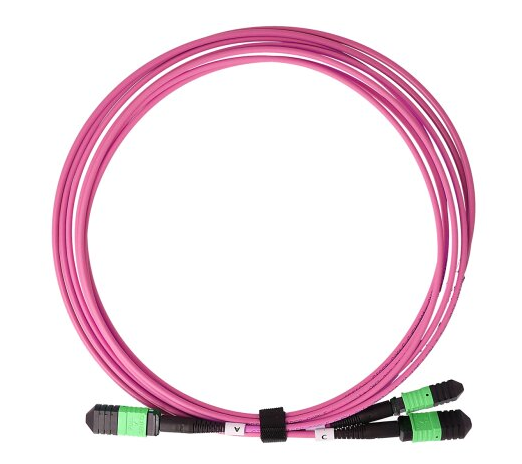Oufu Optical Fiber Cable Co.,Ltd
Address: Shenyang, Liaoning, China
Contact person: Manager Zhang
Phone: 400-964-1314
Mobile phone: +86 13904053308
【whatsapp && wechat】
2024-07-22 3722
MPO fiber cables are designed to house multiple fibers (typically 12, 16, 32, or even 72) within a single connector. This feature allows for increased fiber density, facilitating efficient space utilization in data centers and telecom cabinets. MPO cables are commonly used for backbone and horizontal cabling, enabling high-speed data transmission over short to medium distances.

Single-Mode (SM) MPO Cables: Ideal for long-distance transmission due to their low modal dispersion. They typically operate at 1310nm or 1550nm wavelengths and are identified by yellow jackets and blue connectors.
Multi-Mode (MM) MPO Cables: Suitable for short-distance applications, supporting multiple modes of light transmission. Common types include OM1, OM2, OM3, OM4, and OM5, with OM4 and OM5 offering the highest bandwidth. They come in orange or aqua jackets with beige or black connectors.
Connectors play a vital role in determining the overall performance of MPO cables. Look for industry-recognized brands like US Conec's MTP® connectors, which feature patented designs that minimize insertion loss and maximize return loss.
Insertion Loss: The amount of signal power lost when light passes through a connector or cable. Lower insertion loss (<0.35 dB for high-quality MPO cables) ensures better network performance.
Return Loss: A measure of how much light reflects back into the fiber, affecting signal integrity. High return loss is desirable for optimal transmission.
MPO cables are available in various core counts (8, 12, 16, 32, etc.), allowing for customization based on your network's needs. Consider compatibility with existing infrastructure and future scalability when selecting the core count.
Fiber jackets can be made of PE, PVC, or LSZH (Low-Smoke Zero Halogen) materials, each with varying degrees of fire resistance. Choose a jacket material that aligns with your environment's safety requirements.
Basic MPO Cables: Entry-level MPO cables can start as low as $20 per meter but may compromise on quality, especially in terms of insertion loss and connector durability.
Mid-Range Options: Mid-tier MPO cables offer a balance between price and performance, typically costing around 50to100 per meter, depending on the core count and fiber type.
Premium MPO Cables: High-end MPO cables, featuring top-notch connectors and optimized performance, can exceed $200 per meter for specialized applications.
Cost-Effectiveness: While premium cables offer the best performance, mid-range options often provide an excellent balance between cost and functionality for most applications.
Long-Term Benefits: Investing in quality MPO cables can reduce maintenance costs and downtime due to fewer failures and easier upgrades in the future.
Choosing a cost-effective MPO fiber cable requires a thorough understanding of your network's needs and a careful analysis of price vs. performance. By considering factors such as fiber type, connector quality, insertion loss, core count, durability, and environmental factors, you can make an informed decision that aligns with your budget and long-term goals. Remember, investing in quality MPO cables can pay dividends in the form of improved network performance, reliability, and scalability.
www.adsscable.cn